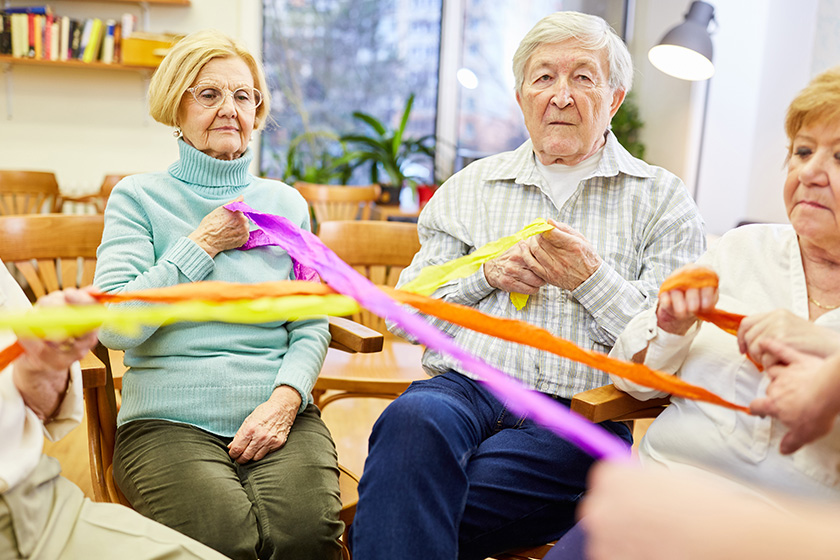Colors go through the brains more swiftly than words do. Here are several colors with the responses connected with these:
Red
Red gets connected to vitality or strength. Red causes a rapid heartbeat or rapid breathing. Supposing patients do not eat adequately, employing red plates might raise elders’ appetites.
Orange
Orange gets connected to joy and community. Donning orange can inspire creativity and engagement.
Yellow
Yellow raises metabolism. While yellow is often seen as lively color, studies reveal that many throw a tantrum more frequently in yellow rooms. Hence, supposing a patient gets aggressive might seem practical to reduce looking at yellow.
Green
Green designates a soothing, calming color. It is often linked to nature or seen as provoking emotions of peace or charity. Green remains an easy color to the eyes, which may sharpen vision. Green remains a final color dementia patients may stop seeing with vision; thus, green remains an excellent color for nurses to don.
Blue
Blue refers to colors depicting the sea or sky or is generally a highly sought-after color. Blue gets linked to peace or aesthetics. It remains a sought-after color in bedrooms as it stimulates the body to release the relaxing hormone m, melatonin, enhancing the user’s sound sleeping –very useful for dementia patients and their nursing aides.
Purple
Purple designates the color of royalty. It is often seen as a soulful color and linked to mystery. Dementia patients might often perceive purple things as religious.
The list below gives recommendations for ways many may improve their lives using color:
- Venture frequently outdoors or concentrate upon the colors in nature
- Use colorful flower decor
- Invest time in observing photographs, paintings, and more colorful crafts
- Paint using vibrant shades, or utilize colored crayons to fill coloring books
- Gaze upon colorful graphics from magazines, books, etc.
- Craft exotic meals using ingredients of many shades
- Use a range of colors for clothes or furniture
- Leisurely relax or slowly visually take in all the colors of your physical surroundings about you.
Colour Therapy
Colour therapy may prove therapeutic to many with memory loss. Joshua J. Freitas, who authored The Dementia Concept, suggests taking distinct colors to deliver contrasts within sections or to facilitate differentiation between things. Consider painting a door with shades that differ from wall planes and render the entrance accessible to see clearly. Placing bright tape upon the handles of walking sticks causes these easier to locate.
Several studies recommend employing the shade pink to inhibit aggressive behavior. The Pink Effect refers to the tranquilizing effects of exposure to vast volumes of the shade pink, assisting with inhibiting emotions of fury and violence.
When wandering remains an issue, several counselors suggest putting black rugs just outside stairs or doors because Alzheimer’s patients may see them as holes and therefore try not to walk upon them. Red shade enhances engagement or improves appetite, while blue and green shades may calm.
From a scientific research study performed by Rizzo (2000) on mature elders, empirical exam results for visual attention, sensitivity, or color upon many having the illness were far worse than those with no sickness. The studies performed by Wijk (1999, 2001) revealed an impediment to the capacity for naming colors. Many studies indicate challenges with distinguishing colors from the blue/green range, whereas no challenges in determining colors from the red/yellow spectrum were shown.







